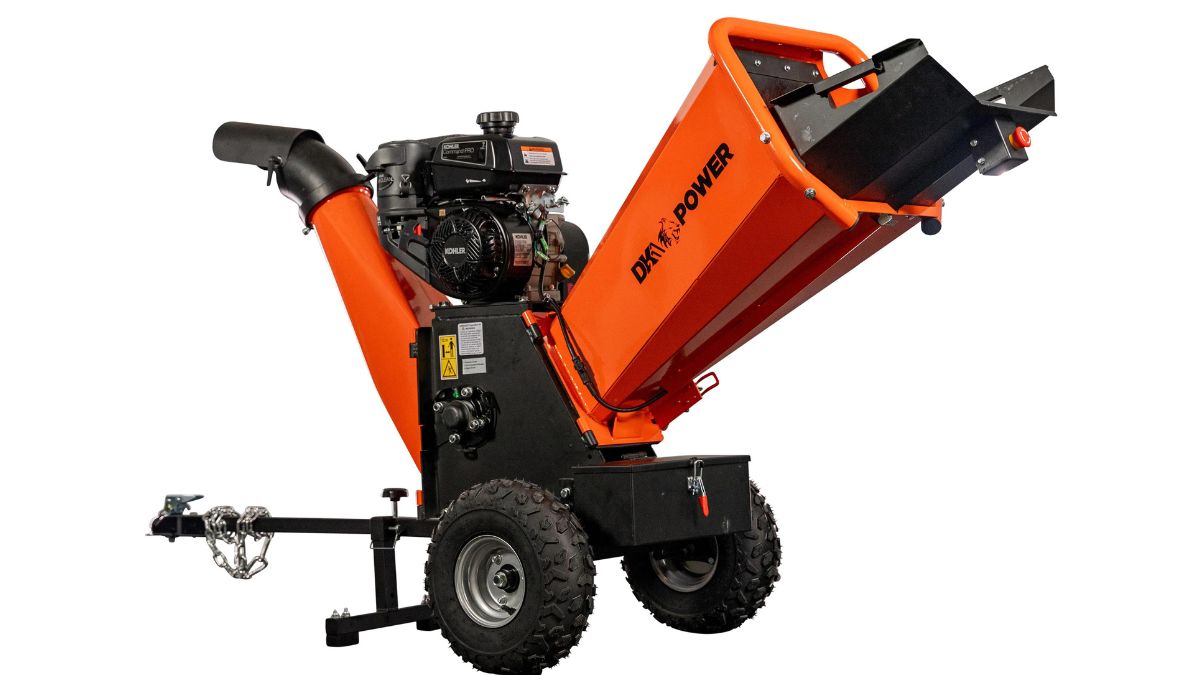These days, wood chippers are a must-have item for every homeowner, gardener, or landscaper who often deals with yard trash. When clearing a big area or pruning trees, shrubs, or hedges, a wood chipper can make short work of the organic debris generated. In this article, we’ll go over wood chippers and the many uses they have around the house and yard.
Types of Wood Chippers
Different kinds of wood chippers serve different purposes. Because of their portability, light weight, and ease of use, electric wood chippers are an excellent choice for homeowners with average-sized yards. Wood chippers that run on gas have more power and can handle larger properties or more demanding tasks. Wood chippers powered by a tractor’s power takeoff (PTO) are widely used in commercial settings and for large-scale land clearing projects.
Factors to Consider When Choosing a Wood Chipper
There are a few things to keep in mind when shopping for a wood chipper. The chipper’s versatility in processing various wood species and sizes is dependent on its power and capacity. For convenience in both usage and storage, the machine’s compactness and mobility are paramount. A feed chute lock and emergency off switch are two examples of safety precautions installed to protect the operator. When planning for long-term use, it’s also important to think about things like blade sharpening and oil changes.
Benefits of Using a Wood Chipper
The use of a wood chipper has many advantages. As a primary benefit, it offers a quick and easy way to get rid of yard debris. A wood chipper can convert large branches and twigs to manageable wood chips in minutes, rather than the hours or days it would take to do the same job by hand. Mulching flower beds and gardens with these wood chips is one option, but they can also be used to make nutrient-rich compost. Using a wood chipper also helps the environment by decreasing the quantity of trash that must be thrown away.
Tips for Operating a Wood Chipper Safely
When using a wood chipper, you should always put safety first. Goggles, gloves, and earplugs are all necessary pieces of safety equipment to prevent injury from flying objects and noise. Remove any sharp objects or loose debris from the work area before turning on the chipper. Accidents can be avoided by carefully following the manufacturer’s guidelines for feeding the machine, keeping a safe distance, and not overloading it.
Wood Chipper Maintenance and Care
Your wood chipper will last longer and work better if you take the time to maintain it regularly. Maintaining a machine involves doing things like wiping it down after each use, sharpening the blades as needed, and lubricating the moving parts to keep them from rusting and running smoothly. Fuel and oil levels should be checked before each use to ensure the safest and most efficient operation.
Popular Wood Chipper Brands in the Market
Several well-known manufacturers provide premium wood chippers. Brand 1 equipment is notoriously sturdy and robust, making it ideal for demanding tasks. Wood chippers powered by electric motors are Brand 2’s forte. Wood chippers powered by gas are available from Manufacturer 3 in a variety of models. You may make a more educated choice about a wood chipper if you take these manufacturers and models into account.
How to Choose the Right Wood Chipper for Your Needs
Consider your individual requirements while shopping for a wood chipper. The smaller electric or gas-powered chippers may be all that is needed for home use. For commercial use or substantial land clearing projects, however, a more robust and substantial chipper may be required. In addition to weighing your needs against the available possibilities, you need also think about your budget.
Wood Chipper Safety Precautions
A certified and trained operator is required to run a wood chipper. It’s crucial that you learn how to use and maintain the machine safely. Don’t wear anything dangling that might get caught in the chipper. Never put too much into the chipper at once, as this might cause it to clog and cause serious problems.
Environmental Considerations of Wood Chippers
When it comes to getting rid of yard trash, wood chippers are the eco-friendliest option. Wood chips made from composting or chipping organic waste can be used as mulch or compost to improve soil quality and cut down on chemical fertilizer applications. Reusing wood chips in landscaping or donating them to community gardens and farms promotes sustainability.
Best Practices for Using Wood Chips
Beyond their use as mulch for yards, wood chips have many other potential applications. Wood chip mulch has been shown to increase soil quality, decrease weed development, and retain moisture in garden and flower bed plantings. As a safe and aesthetically pleasing ground cover, they can also be utilized for pathways and playgrounds.
Conclusion
Wood chippers are useful machines for producing mulch and disposing of yard trash efficiently. You may take advantage of the many benefits wood chippers offer if you select the right model, observe all safety guidelines, and keep your machine in good working order. Wood chippers are indispensable tools for anyone tackling organic waste, whether for a small home yard or a large-scale land clearing job.
FAQs
How often should I sharpen the blades of my wood chipper?
A: The frequency of blade sharpening depends on usage and the type of wood being chipped. As a general guideline, it’s recommended to sharpen the blades after every 10 hours of use or if you notice a decrease in cutting efficiency.
Can I chip wet or green wood?
A: While some wood chippers are capable of chipping wet or green wood, it’s generally advisable to allow the wood to dry out for better results. Wet or green wood can be more challenging to process and may lead to clogs or blade damage.
Is it necessary to wear safety gear when operating a wood chipper?
A: Yes, wearing safety gear is crucial when operating a wood chipper. Safety goggles, gloves, ear protection, and sturdy footwear are essential to protect against flying debris, loud noise, and potential accidents.











